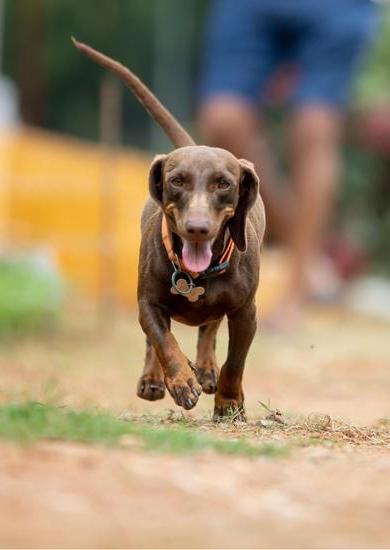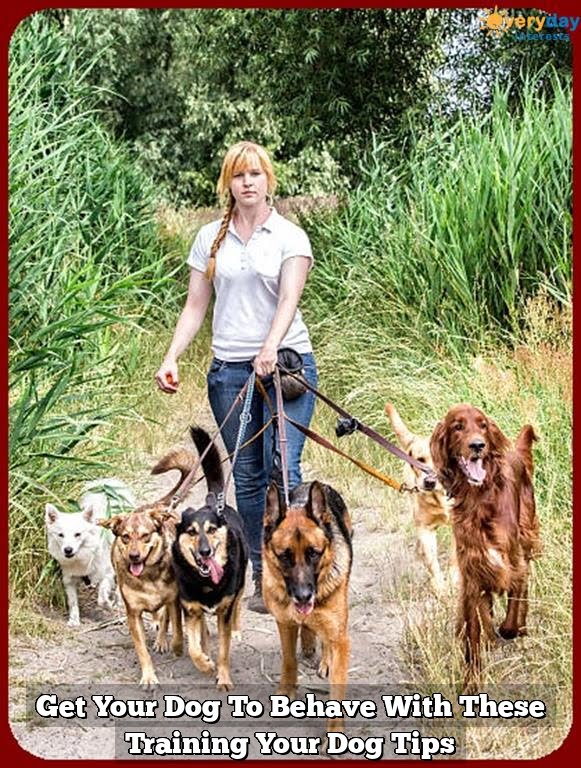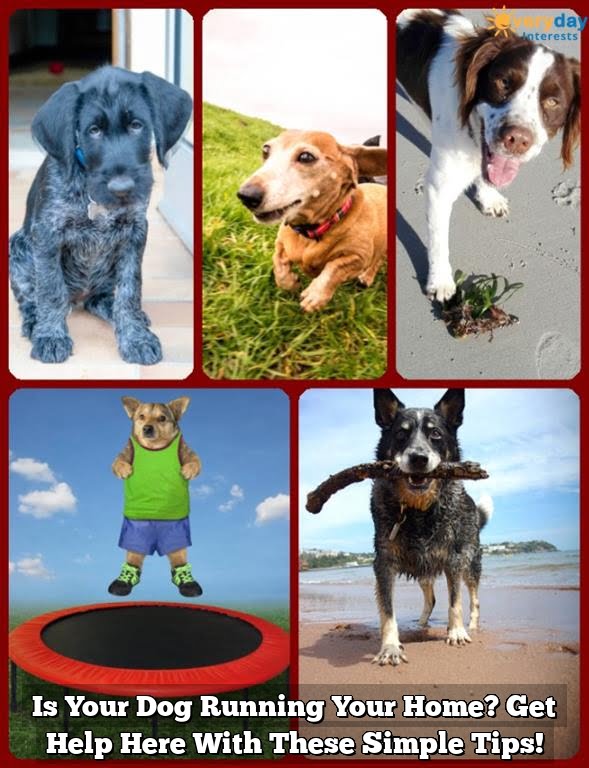Have you ever wished that you could count on your loyal canine companion to bring the mail straight to you? Imagine the convenience of not having to trek down to the mailbox every day, especially for those with limited mobility.
Training your dog to fetch the mail can provide a range of benefits, from increased independence to a fun and engaging activity for both you and your furry friend. In this article, we will guide you through the process of teaching your dog to get the mail, step by step.
A well-trained dog is a valuable asset in any home. Beyond basic obedience commands, such as sit and stay, training your dog to take on more specialized tasks like retrieving the mail can enhance their overall usefulness and strengthen the bond between you. With consistent training and positive reinforcement techniques, almost any dog can learn how to fetch the mail and become a reliable helper around the house.
For individuals with limited mobility or those who simply want an added dose of convenience, having a dog that can bring in the mail is a game-changer. No longer will you have to struggle through inclement weather or make multiple trips back and forth just to retrieve envelopes and packages. By investing some time in teaching your dog this one task, you can enjoy an increased sense of independence and reduce physical strain.
In the following sections, we will cover everything from choosing the right breed for mail duty to advanced techniques and troubleshooting common challenges. We’ll begin by discussing how to lay a firm foundation with basic obedience training before moving on to specialized mail retrieval skills. So grab some treats and get ready to embark on an exciting journey as we teach your furry friend how to fetch the mail.
Choosing the Right Dog for Mail Duty
When it comes to training your dog to get the mail, choosing the right dog breed or characteristics is essential. Not all dogs have the natural instincts or abilities required for mail retrieval. To increase your chances of success, consider the following factors when selecting a dog for mail duty:
- Intelligence: Look for intelligent breeds or mixed breeds known for their problem-solving skills and ability to understand and follow commands. Border Collies, Poodles, Retrievers, and German Shepherds are known to be highly intelligent and trainable.
- Trainability: Some dogs are more eager to please their owners and respond well to training sessions. Breeds like Labrador Retrievers, Golden Retrievers, and Australian Shepherds are often highly trainable and excel in obedience tasks.
- Friendly Nature: A friendly and sociable dog will make it easier to introduce new people or elements into the training process. Dogs with a friendly nature tend to be more cooperative during training activities and interact well with strangers who may deliver mail.
Keep in mind that individual personalities and traits can vary even within a specific breed. It’s important to spend time interacting with potential candidates before deciding on the right dog for mail duty.
Once you’ve chosen a dog with the appropriate characteristics, you can begin building a strong foundation through basic obedience training.
Building a Strong Foundation
Before diving into specialized mail training, it is crucial to establish a solid foundation of basic obedience training for your dog. These fundamental commands create a strong bond between you and your dog, ensuring effective communication and control during the mail retrieval process. Here are some essential commands to prioritize:
- Sit: Teach your dog to sit on command by holding a treat close to their nose and slowly moving it up over their head. As they follow the treat with their eyes, their natural instinct will be to sit down. Reward them with praise and the treat.
- Stay: This command teaches your dog to remain in one place until given further instruction. Start by having your dog sit, then extend your hand out with your palm facing them while firmly saying “stay.” Take a small step back and if they remain in position, reward them. Gradually increase the distance and duration of the stay.
- Come: The recall command is vital for mail training as it ensures that your dog returns promptly after retrieving mail. Begin indoors or in a confined space with minimal distractions. Say “come” in an inviting tone while gently pulling on their leash towards you. Reward them when they reach you.
- Leave It: Dogs need to understand that certain items are not meant for them, including letters or packages that do not belong to them. Hold a treat in one hand and close your fist around it. Offer your closed fist to your dog while saying “leave it.” When they stop trying to get the treat out of your hand, provide verbal praise and reward.
By building a strong foundation of basic obedience training, you set yourself up for success when moving on to more specific mail retrieval skills. Consistency, patience, positive reinforcement, and short training sessions are key factors in achieving desired results.
| Command | Instructions |
|---|---|
| Sit | Hold a treat close to their nose and slowly move it up over their head. Reward them with praise and the treat when they sit. |
| Stay | Have your dog sit, then extend your hand out with your palm facing them while firmly saying “stay.” Gradually increase the distance and duration of the stay, rewarding them when they remain in position. |
| Come | Say “come” in an inviting tone while gently pulling on their leash towards you. Reward them when they reach you. |
| Leave It | Hold a treat in one hand and close your fist around it. Offer your closed fist to your dog while saying “leave it.” Provide verbal praise and reward when they stop trying to get the treat. |
Introducing the Mail Retrieval Concept
Starting with Play Exercises
To introduce the concept of fetching mail to your dog, it is important to start with simple play exercises using small objects. Begin by choosing a toy or any small item that your dog is already familiar with. Toss the object a short distance and encourage your dog to retrieve it. Use positive reinforcement, such as treats or praise, when they successfully bring the object back to you.
Gradually increase the difficulty by introducing objects that resemble mail, such as envelopes or small packages wrapped in paper. Keep the play sessions short and fun, gradually increasing the distance and complexity of the retrieval exercise. This way, your dog will associate retrieving objects with positive experiences.
Progressing to Actual Mail
Once your dog has mastered retrieving small objects during playtime, it’s time to introduce actual mail into their training routine. Start by using old mail or junk mail that can be easily replaced if torn or damaged. Place the mail on the floor within sight of your dog and give them the cue word or command you use for fetch. Encourage them verbally and guide them towards the mail if needed.
As your dog becomes more comfortable with retrieving actual mail, begin placing it in different locations around the house for them to find and retrieve. Gradually extend this practice outside to your mailbox or mailbox area. Remember to reward and reinforce successful retrievals each time.
Associating Mail with Fetch Command
To help your dog associate “mail” specifically with the fetch command, incorporate verbal cues consistently during training sessions. Say “fetch” each time you present an object resembling mail, whether during play exercises or actual mail retrieval practice.
Use a distinct tone of voice when giving the fetch command and offering praise when they successfully bring back what resembles mail. With repetition and consistency, your dog will start associating “mail” as a specific item they are expected to retrieve, reinforcing the link between the command and the action.
Remember that each dog is unique, and training progress may vary. Be patient and flexible, providing plenty of opportunities for practice and reinforcement. With time and effort, your dog will develop the skills needed to confidently fetch the mail.
Training the “Fetch” Command
To train your dog to get the mail, it is essential to start by teaching them the basic command of “fetch.” This command lays the foundation for them to understand what is expected of them when retrieving the mail. Here are some step-by-step instructions to help you train your dog in fetching:
- Begin by choosing a specific object that will serve as their designated “fetch” item. It could be a toy or any other item that your dog finds appealing.
- Hold the item in front of your dog and say “fetch” while encouraging them to grab it with their mouth. Use an excited and positive tone of voice.
- If they show any interest or attempt to pick up the object, immediately reward them with praise and a treat.
- Repeat this exercise several times, gradually increasing the distance between you and the object each time they successfully retrieve it.
- Once your dog consistently retrieves the object when you throw it short distances, add in the command “drop” or “release.” As your dog approaches you with the item, gently place your hand under their mouth and say the command while encouraging them to drop it into your hand.
- Again, reward them profusely when they obey the “drop” command.
- Practice this game regularly, always using positive reinforcement techniques such as treats, praise, and playtime as rewards for successful retrievals.
Remember that training takes time and patience. Every dog learns at its own pace, so consistency is key throughout this process. Once your dog has mastered fetching toys or objects during playtime, you can gradually transition this skill into retrieving actual mail by following the next steps in training outlined in this article.
With perseverance and dedication, you can effectively teach your furry friend how to fetch not just toys but also fetch important items like mail confidently.
Teaching Your Dog to Recognize and Retrieve Mail Specifically
Dogs are highly intelligent animals that can be trained to recognize and retrieve specific objects, including mail. Teaching your dog to recognize and retrieve mail specifically is an important step in training them to get the mail. This section will provide techniques to help your dog differentiate between regular mail and other objects, such as toys, and how to associate the mail with the fetch command.
To begin training your dog to recognize and retrieve mail specifically, it is crucial to start with a solid foundation of basic obedience training. Make sure your dog is familiar with commands such as “sit,” “stay,” and “leave it.” These commands will come in handy when teaching them to selectively pick up only the mail.
Once your dog has a good grasp of basic obedience commands, you can introduce them to the concept of mail retrieval. Start by using positive reinforcement techniques while playing a simple game with small objects similar in size and shape as the mail, such as envelopes or magazines. Use a clicker or verbal praise whenever they interact with these objects positively, reinforcing the idea that they should pay attention to these items.
Gradually introduce actual pieces of mail during playtime sessions with your dog. Begin by presenting one piece of mail along with other objects used during playtime. Give the command “fetch” and encourage your dog to pick up only the piece of mail using verbal cues and hand signals. Reward them generously when they successfully accomplish this task.
To further reinforce their understanding of retrieving specific objects, gradually increase the number of pieces of mail placed among other play objects. Continue giving the “fetch” command while guiding them towards picking up only the pieces of mail. Consistency is key during this process, so make sure you practice this exercise regularly until they consistently choose and retrieve only the mail.
It’s essential for your dog to be able to differentiate between regular household objects like toys versus important items like the mail. By following these techniques outlined above, you’ll be well on your way to training your dog to recognize and retrieve mail specifically. Patience, consistency, and positive reinforcement are key elements in this training process. With time and practice, you’ll have a furry companion who can confidently fetch the mail for you.
Generalizing Mail Retrieval Skills to Different Environments
Once your dog has mastered the concept of fetching the mail, it is important to generalize their skills to different environments. This will ensure that they can confidently retrieve the mail no matter where they are. Here are some tips for practicing mail retrieval in various scenarios:
- Different Rooms: Start by practicing in different rooms of your house. Begin with a room where your dog is already comfortable retrieving the mail, and gradually introduce new rooms. Use familiar objects as mail substitutes in each room to help your dog understand that the command applies regardless of the location.
- Outdoor Settings: Once your dog is proficient at retrieving the mail indoors, it’s time to take their training outside. Begin in a quiet and familiar area, such as your backyard. Allow your dog to explore the space first before introducing the concept of fetching specific items as “mail.” Gradually increase distractions in outdoor settings, such as other people or animals nearby, to help strengthen their focus and obedience.
- At the Mailbox: To make sure your dog understands that fetching the mail applies specifically to the mailbox area, practice near or at the actual mailbox. Start by simulating retrieving mail from an open mailbox without any distractions. Then, gradually introduce more realistic scenarios by having someone else pretend to collect their mail while you give your dog commands from a distance.
Remember, consistency is key when generalizing mail retrieval skills. Practice regularly and slowly increase difficulty levels as your dog becomes more confident and reliable in different environments.
Troubleshooting Common Challenges and Pitfalls
Training a dog to fetch the mail can sometimes come with its own set of challenges. It’s important to anticipate these hurdles and have strategies in place to overcome them. In this section, we will address common difficulties that may arise during mail training and provide solutions and helpful tips to ensure success.
One common challenge is when dogs lose interest or get distracted during training sessions. This can happen if the training becomes repetitive or if the dog doesn’t find the activity stimulating enough. To keep your dog engaged, try incorporating variety into your training sessions. Use different types of mail, such as envelopes or packages of various sizes, to add novelty and excitement. You can also change the location of your training area to keep things interesting for your dog.
Another common pitfall is when dogs struggle to let go of the mail once they retrieve it. This can be due to possessiveness or an instinctual desire to hold onto objects. To address this issue, you can teach your dog a “drop it” command alongside their “fetch” command.
Start by holding a treat near their nose while saying “drop it” and then rewarding them when they release the object. Gradually increase the difficulty by using a low-value item before moving on to practicing with actual mail.
Sometimes dogs may mistakenly grab other objects instead of the mail, especially if they resemble toys or have similar textures. To avoid this confusion, you can use scent association techniques to help your dog differentiate between mail and other items. Rubbing a small amount of scent from an actual piece of mail onto a designated mailbox toy can help your dog recognize the unique smell associated with retrieving mail.
| Common Challenge | Solution |
|---|---|
| Dogs losing interest or getting distracted | Incorporate variety into training sessions and change the location of training area |
| Dogs struggling to let go of the mail | Teach a “drop it” command alongside the fetch command |
| Dogs grabbing other objects instead of the mail | Use scent association techniques to help differentiate between mail and other items |
By addressing these common challenges and pitfalls, you can set yourself and your dog up for success in training them to fetch the mail. Remember to be patient and consistent with your training efforts, as dogs may take some time to fully grasp the concept. With perseverance and positive reinforcement, you’ll soon have a well-trained dog that eagerly retrieves your mail on a daily basis.
Mastering Mail Delivery
Teaching Your Dog to Put the Mail in a Designated Area
Once your dog has mastered retrieving the mail, you can take their training to the next level by teaching them to put the mail in a designated area. This skill adds an extra layer of convenience and independence to the mail retrieval process. Here’s how you can teach your dog to deliver the mail:
- Select a designated area: Choose a specific spot in your home where you want your dog to place the mail. It could be a basket, a tray, or any other container that is easily accessible.
- Introduce the target area: Begin by guiding your dog to the designated area using a treat or a toy as encouragement. Use verbal cues such as “put it here” or “deliver.”
- Encourage drop-off: When your dog reaches the target area with the mail in their mouth, praise them enthusiastically and reward them with treats or affectionate pats. Gradually phase out physical guidance and rely solely on verbal cues and positive reinforcement.
- Practice and repetition: Repeat this process multiple times until your dog consistently understands and follows the command to put the mail in the designated area.
- Generalize to different locations: Once your dog has mastered delivering the mail at home, practice this skill in different areas of your home and even outdoors. This will help them generalize their training and understand that delivering the mail means putting it in a specific place regardless of location.
Safety Precautions during Mail Delivery
While teaching your dog advanced techniques for mail delivery, it is crucial to ensure their safety as well as protect your mail from damage. Here are some safety precautions to keep in mind:
- Avoid hazard zones: Make sure you have identified potential hazards around you when working with postal items, such as paper cuts or chemical residue on envelopes from adhesive elements like stamps or labels. Always wash your hands after handling mail.
- Protect delicate mail: If you receive fragile or easily damaged items in the mail, it’s essential to teach your dog to handle them gently. You can use a separate command like “gentle” or “soft” when delivering such items to cue your dog to be extra careful.
- Supervise outdoor mail retrieval: When training your dog to fetch the mail from the mailbox, keep a close eye on them to prevent accidents or confrontations with other animals or humans passing by. Consider using a leash during initial training sessions for added safety.
- Regular health check-ups: Prioritize your dog’s overall health and well-being by keeping up with their vaccinations, ensuring they are free of any parasites, and providing regular exercise and mental stimulation.
By following these advanced techniques and safety precautions, you can ensure that your dog not only becomes competent at retrieving the mail but also does so safely without causing harm to themselves or anyone else involved in the process.
Remember that mastering advanced skills takes time and patience, so continue to practice regularly while maintaining a positive and rewarding atmosphere during training sessions. With dedication and consistency, you will soon enjoy the convenience of having a well-trained dog that can confidently deliver the mail.
Celebrating Success
Using Positive Reinforcement
One of the most effective ways to reinforce good behavior and progress in your dog’s mail training is through positive reinforcement. Dogs thrive on praise, treats, and rewards, so it’s important to make learning fun and enjoyable for them. Whenever your dog successfully retrieves the mail, shower them with praise and affection. Use a happy and enthusiastic tone of voice to show your appreciation for their efforts.
In addition to verbal praise, you can also use treats as a form of positive reinforcement. Keep some small, high-value treats on hand during training sessions. When your dog successfully fetches the mail and brings it to you, immediately reward them with a treat. This creates a positive association between the desired behavior (mail retrieval) and the reward (treat).
It’s crucial to remember that timing is key when using positive reinforcement. The reward should be given immediately after your dog has completed the desired action. This helps them make a clear connection between their behavior and the treat or praise they receive.
Tracking Progress
To track your dog’s progress in mail training, keep a log or journal of each training session. Note down any improvements or challenges you encountered during each session. This will give you insights into how your dog is progressing over time and help you identify areas where they may need additional practice.
Document specific milestones such as when your dog first began picking up objects similar in size to mail or when they started consistently bringing the mail directly to you instead of dropping it along the way. Celebrate these achievements by giving extra praise or rewards during those sessions.
By keeping track of your dog’s progress, you can also identify any patterns or trends that may be affecting their performance. For example, you might notice that on days when your dog had more exercise beforehand, they were more focused and performed better during mail training. This information can help inform future training sessions and adjustments to your approach.
Varying Rewards and Reinforcement
While treats are often the go-to reward during training, it’s important to mix things up and provide a variety of reinforcement for your dog. This prevents them from becoming overly dependent on treats and ensures that they respond reliably even when treats aren’t readily available.
In addition to verbal praise and treats, consider incorporating other rewards such as playtime with their favorite toy or access to a special activity that they enjoy. The key is to find what motivates your dog most and vary the rewards accordingly. Some dogs are highly food-motivated, while others may be more motivated by play or attention.
Remember that reinforcement should be consistent throughout the training process. Even as your dog becomes more proficient in mail retrieval, continue to reinforce their behavior with praise, treats, or other rewards. This helps solidify the desired behavior and encourages them to maintain their skills over time.
By celebrating success, tracking progress, and varying rewards and reinforcement methods, you can effectively reinforce good behavior and progress in your dog’s mail training journey. Remember to be patient, consistent, and always maintain a positive attitude towards both the training process and your furry companion. With time and dedication, you’ll soon have a well-trained dog confidently fetching the mail for you.
Conclusion
In conclusion, training your dog to fetch the mail can be a rewarding and practical endeavor. By following the steps outlined in this article, you can transform your canine companion into a helpful assistant. The benefits of having a dog that can fetch the mail are numerous.
Firstly, there is the convenience factor. No longer will you have to make that trek to the mailbox yourself, especially if you have mobility issues. Your well-trained dog can save you time and effort by bringing the mail directly to you. This is particularly helpful for individuals with limited mobility or those who live in areas with inclement weather.
Additionally, teaching your dog to retrieve the mail promotes independence. For individuals who may rely on others for assistance, having a capable four-legged helper can be empowering. Your dog’s newfound skill can increase your level of autonomy and improve your overall quality of life.
Lastly, let’s not forget about the joy that comes with successfully completing this training journey. Witnessing your furry friend confidently bring you the mail is both heartwarming and satisfying. It showcases not only their intelligence and trainability but also the strong bond that exists between dogs and their humans.
As with any training process, it is essential to be patient and consistent. Celebrate every small milestone along the way and use positive reinforcement techniques to reinforce good behavior. Remember that building a foundation of basic obedience training is crucial before diving into specialized skills like mail retrieval.
So take the time to invest in training your dog to get the mail – enjoy the fruits of your labor and revel in both practicality and companionship this newfound skill brings.
Frequently Asked Questions
How do I train my dog to get the post?
Training a dog to fetch the post can be a rewarding and practical task. Start by introducing your dog to the concept of holding an object in their mouth, such as a toy or a treat. Reward them with praise and treats when they successfully hold onto it. Once they have grasped this concept, gradually introduce the post into their training routine.
Start by placing the post near them and giving them the command to hold it with their mouth. Reward them when they do so successfully, using positive reinforcement techniques like treats or verbal praise. Gradually increase the distance between your dog and the post until they are comfortable retrieving it from another room or area. Consistency, patience, and positive reinforcement are key in training your dog to fetch the post.
What to do when your dog won’t come?
When your dog refuses to come to you, there are several strategies you can try to encourage their cooperation. Firstly, avoid chasing after your dog as this may turn it into a game for them. Instead, use positive reinforcement techniques such as treats or verbal praise to entice them towards you.
You can also try using a toy or another object that they find enticing as a means of getting their attention and encouraging them to come towards you. Additionally, consider working on improving your recall command through consistent training sessions in various environments with increasing distractions. Building a strong bond with your dog through trust, rewards, and consistent training will significantly increase their responsiveness when you call for them.
How do you get a dog to release something in his mouth?
Teaching a dog to release something from their mouth is an important skill for both safety and convenience purposes. The “drop it” command can be taught using positive reinforcement techniques and patience. Begin by offering your dog a desirable treat while gently gripping the item they have in their mouth without forcing it out; make sure not to engage in any tug-of-war situation that may reinforce possessiveness over objects. Repeat clear cue words like “drop it” while presenting the reward close to their nose just long enough for them to release the item.
Once they let go, immediately reward them with the treat and praise. Consistency is crucial, so practice this exercise in various situations and gradually increase the difficulty by using less enticing items or introducing distractions. With time and continuous training, your dog will understand the cue to release something from their mouth when commanded.

Welcome to the blog! I am a professional dog trainer and have been working with dogs for many years. In this blog, I will be discussing various topics related to dog training, including tips, tricks, and advice. I hope you find this information helpful and informative. Thanks for reading!





